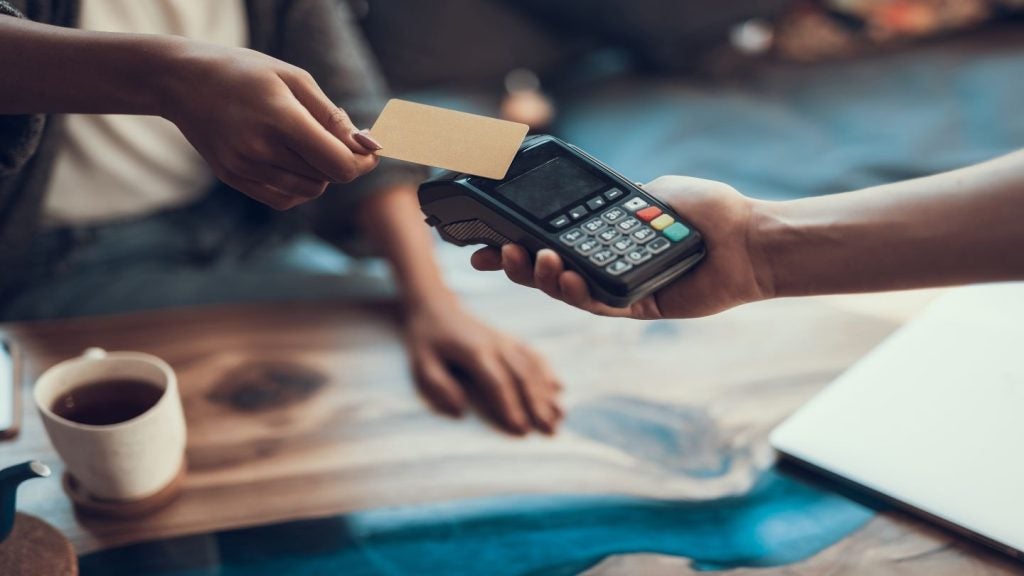The Danish cards and payments industry is well developed, and its consumers are prolific users of payment cards. The country had the world’s highest frequency of card use, with 180.8 transactions per card in 2016, and the government has ambitions for Denmark to become a completely cashless society by 2030
Danish consumer preference for electronic payments and government plans to advance as a cashless society have supported growth in payment cards. Overall, payment cards posted a CAGR of 10.73% in terms of transaction volume between 2012 and 2016– a trend that is anticipated to continue over the next five years.
The Danish banking sector is well developed and effectively fully saturated, covering the entire working-age population.
The percentage of the Danish population aged 15 or above with a bank account has reached 100%, according to the World Bank Global Findex survey. High banking penetration drives demand for banking products such as debit cards.

Moving towards a cashless society
As in many developed economies, cash payments are declining in Denmark. Cash transactions accounted for 26% of the overall payment transaction volume in 2016 – down from 33.9% in 2012. In comparison, in other developed European markets such as the UK, cash accounted for 41% of the overall payment transaction volume in 2016.
To encourage cashless payments, the Danish government proposed a regulation in May 2015 to allow certain categories of retailer – restaurants, apparel stores and gas stations – to refuse cash; the regulation is, however, yet to be passed in the Danish parliament. In addition, the government has set a deadline to make Denmark completely cashless by 2030.
How well do you really know your competitors?
Access the most comprehensive Company Profiles on the market, powered by GlobalData. Save hours of research. Gain competitive edge.

Thank you!
Your download email will arrive shortly
Not ready to buy yet? Download a free sample
We are confident about the unique quality of our Company Profiles. However, we want you to make the most beneficial decision for your business, so we offer a free sample that you can download by submitting the below form
By GlobalDataDankort maintains its dominance
Dankort is the national debit card scheme, which dominated the debit cards market with 79.1% of the total transaction value in 2016.
Dankort operates under a zero-interchange-fee model, and has dominated the market since its introduction in 1983. MasterCard and Visa are also strengthening their presence, with 16.5% and 4.4% respectively of the total debit card transaction value in 2016.
According to the Danish Payment Council’s New Payment Solutions report 2014, Dankort was the most popular mode of payment for purchases at retail stores. The report also stated that Dankort was the most frequently used payment system for online shopping, and three in four Danish consumers had used it for their most recent online purchase.
To facilitate international payments using Dankort cards, banks offer VisaDankort – a co-badged card which can be used as a Dankort card in Denmark and as a Visa card outside the country.

Rise in e-commerce to support growth
E-commerce posted a CAGR of 12.40% between 2012 and 2016, to reach $15.1bn (DKK101.4bn) in 2016.
According to the E-Commerce in the Nordics report published by PostNord in 2016, around 88% of the population purchases goods online at least once a year.
Conventional payments, including payment cards and credit transfers, remain the preferred payment method, accounting for 89.3% of the e-commerce transaction value in 2016. Digital and mobile wallets and carrier billing are emerging, and collectively accounted for 6.9% of total e-commerce transaction value in 2016 – up from 2.6% in 2012.
Gradual adoption of contactless
Contactless payments are developing in Denmark. The number of contactless cards registered significant growth during 2015–2016, rising from 700,000 to 2.5 million; the figure is expected to reach 11.5 million by the end of 2021. To capitalise on the rising preference for contactless payments, Danske Bank and Jyske Bank began offering contactless Dankort cards from August 2015.
Contactless mobile payments are also expected to gain prominence. Nets entered into an agreement with JCB in April 2016, allowing merchants to accept Dankort debit card payments via smartphones using J/Speedy, JCB’s contactless technology.
J/Speedy can be used to make contactless payments for amounts up to $29.80; a security code is required for transactions above this amount.

Growth in mPOS terminal installations
The growing payment cards market attracted several new entrants to the Danish mPOS market. In August 2013, for instance, payment solutions company Adyen launched Shuttle, an mPOS solution which can be used by merchants to accept smartphone-based card payments at POS terminals.
Payment service provider iZettle launched the iZettle Card Reader Lite in February 2015. This product is a chip-and-PIN card reader that can be connected to tablets and smartphones to accept card-based payments.
Danish startup Shopbox introduced a cloud-based POS solution in April 2016, which provides faster transaction processing at coffee shops, clubs and sports arenas where transaction speed is essential for maximising footfall. Shopbox’s POS solution runs on both iOS and Windows-based tablets.







